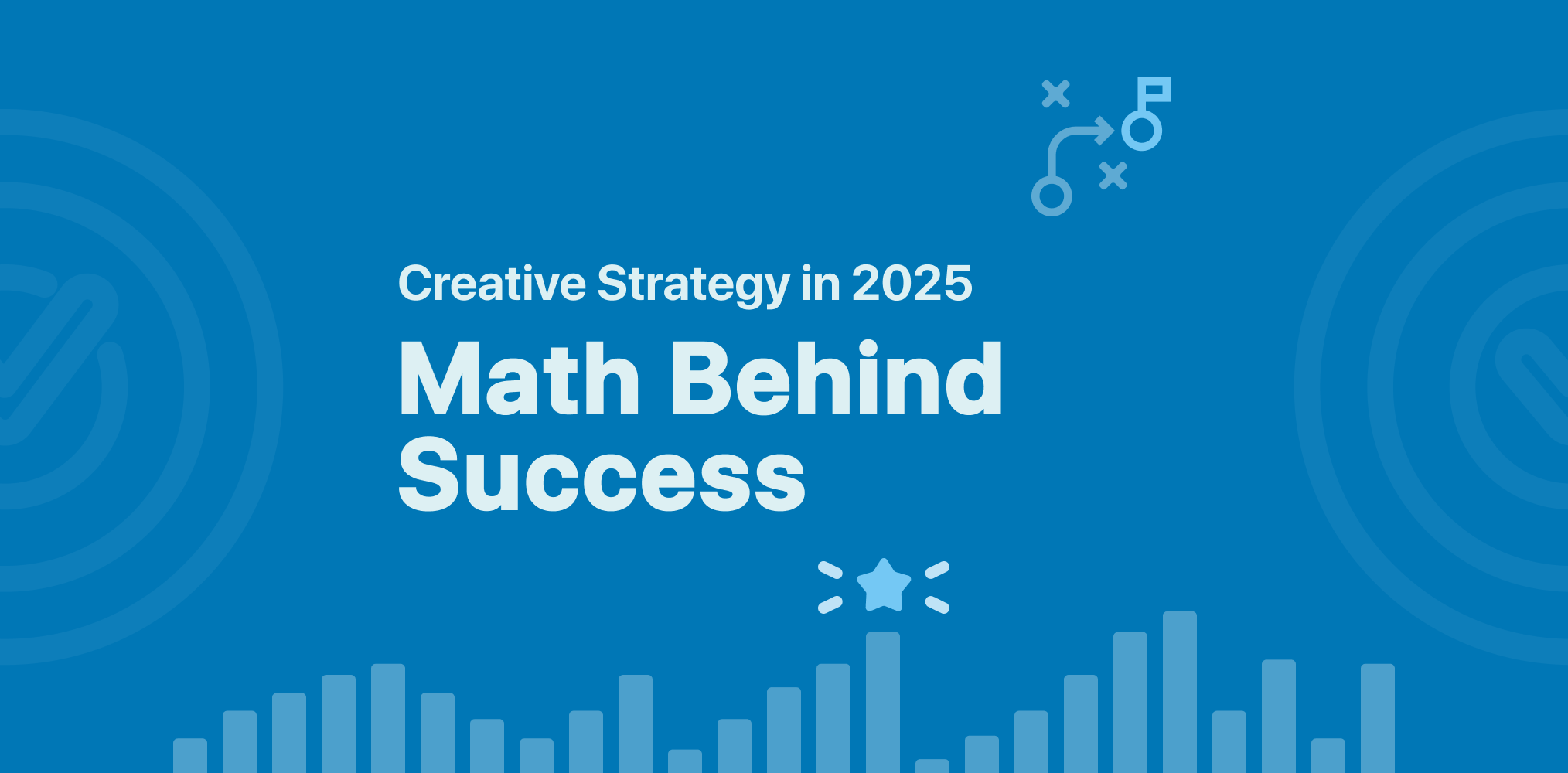
In 2025, creative strategy will shift dramatically, focusing more on the mathematics of creative strategy than on the creatives themselves. At the heart of this shift is a crucial metric: creative volume. While 2024 emphasized creative diversity—an important factor that will still hold relevance—the new era demands an even greater emphasis on creative volume. This change is driven by evolving algorithms and the ongoing AI revolution, both of which will play pivotal roles in managing creative volume efficiently.
The rise of creative volume
The surge in importance of creative volume is not arbitrary. Algorithms are increasingly optimized for higher volumes of creative inputs, allowing brands to identify winning ads more rapidly. The AI revolution is a game-changer in this regard, providing tools that streamline creative production, reduce costs, and maintain quality. However, before diving into AI’s role, let's explore the metrics that define this new creative landscape.
Key metrics for creative success
1. Hit metric: measuring success
The "hit" metric is essentially a measure of how much success your creative efforts are generating. Hit ads are those that outperform others significantly, not only in terms of cost per acquisition (CPA) but also by capturing the lion’s share of conversions. While metrics like return on ad spend (ROAS) could be used, CPA provides a clearer picture by offering consistency regardless of average order value (AOV) fluctuations.
Criteria for hit ads:
- Conversion volume: A minimum threshold of conversions within a 30-day period.
- Spend efficiency: At least X times the spend of the target CPA, adaptable to your brand’s specifics.
- CPA performance: The CPA of hit ads must be less than or equal to the target CPA.
The exact "X" factor depends on your brand’s unique performance benchmarks, and it is critical to find this sweet spot.
2. Hit ratio: evaluating conversion distribution
The hit ratio (or hit index) measures the proportion of conversions from hit ads relative to total conversions. It ranges from 0 to 1 and provides insights into your creative strategy's effectiveness.
Interpreting the hit ratio:
- Too low (near 0): Could indicate low spend, poor creative quality, insufficient experimentation, or a product-market fit issue.
- Too high (above 0.9): Suggests over-reliance on a few winning creatives, posing a risk if those ads fatigue.
An ideal hit ratio balances high-performing ads with continuous experimentation to avoid over-dependence on a few creatives.
3. Hit rate: measuring creative success
The hit rate is the number of hit ads divided by the total ads launched. It serves as a direct indicator of how well your creative process translates into winning ads. However, this metric is intertwined with two others: cost per creative and cost per hit.
- Cost per creative: The total creative production cost divided by the number of creatives produced within a given period.
- Cost per hit: A composite metric, calculated by dividing the cost per creative by the hit rate. This metric is crucial as it reveals how efficiently your creative budget generates successful ads.
The role of AI in creative production
AI is a game-changer in reducing the cost per creative. By leveraging AI tools, brands can generate high-quality creatives rapidly and at scale. This includes everything from video ads to user-generated content (UGC) simulations with AI-generated influencers. This technological advancement allows brands to shift from traditional, expensive creative processes to agile, cost-effective strategies.
A practical example: creative volume vs. hit rate
Consider two brands, A and B, each with a monthly creative budget of $10,000:
| Brand | Creatives Produced | Hit Rate | Cost per Creative | Cost per Hit | Required Sales for Payback |
|---|---|---|---|---|---|
| A | 20 | 10% | $500 | $5,000 | 34 |
| B | 200 | 5% | $50 | $1,000 | 10 |
Brand B, despite a lower hit rate, achieves a significantly lower cost per hit due to its high creative volume. This translates into a shorter payback period and more opportunities to scale through consistent creative experimentation.
The future of creative strategy: it’s all about the numbers
The evolving role of a creative strategist is increasingly analytical. It is less about guessing which creative will work and more about optimizing the process to lower costs and increase creative output. The objective is to maintain a decent hit rate while scaling creative production, ensuring a sustainable flow of winning ads.
This data-driven approach emphasizes scalability and efficiency. Brands must shift from expensive, high-production-value ads to agile, AI-driven creative processes. Those who adapt to this strategy will maintain a competitive edge in 2025 and beyond.
The creative strategy of the future demands a shift in mindset—from creating a few perfect ads to generating many good ones and letting the algorithm find the winners. Brands and agencies alike must evaluate their creative production costs and embrace AI-driven solutions to remain competitive. The era of creative volume is here, and success lies in mastering the math behind it.
If you have different insights or want to dive deeper into this topic, I’d love to hear your thoughts. Let’s keep the conversation going!

